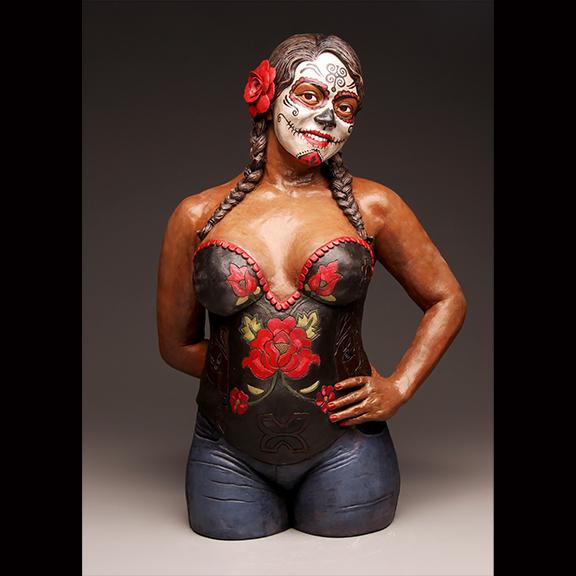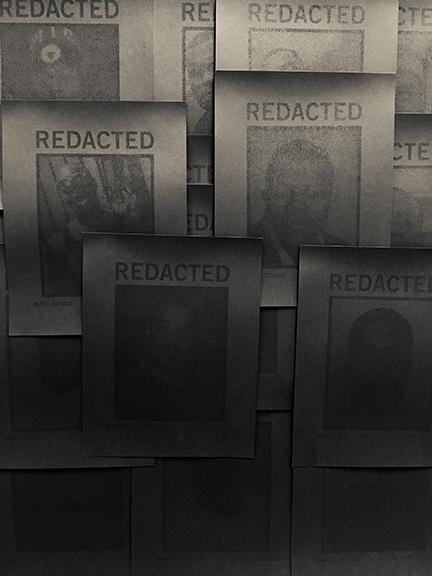
Parallel Visions exhibit includes 2 from School of Art, Art History & Design
calendar icon23 Jan 2017

Lincoln, Neb.—Two artists from the University of Nebraska–Lincoln’s School of Art, Art History & Design will present their work at Parallel Visions in February in an exhibition titled “Crosswise Arrangements.”
As February is African American History Month, Sculptor and alumnus Nathan Murray (B.F.A. 2009) and 2nd year graduate student in Photography Zora J. Murff present an exhibition Feb. 3-10 that takes a critical look at race relations in America today, while also acknowledging the necessity for empathy and communication.
The exhibition opens Feb. 3 and runs through Feb. 10. An artist talk and closing reception will be held on Friday, Feb. 10 from 6-9 p.m. at Parallel Visions, which is located at 1410 O Street, 2nd floor. The O St. entrance is next to Highnooner’s. Parallel Visions Art Director Kat Hedges, a junior art major in the School of Art, Art History & Design, will moderate the discussion starting at 7 p.m.
Admission is a suggested donation of $5.
The exhibition title, “Crosswise Arrangements,” was inspired by the concept of chiasmus, which is a rhetorical figure in which "words, grammatical constructions or concepts are repeated in reverse order, in the same or a modified form."
Frederick Douglas wrote in a “Narrative of the Life of Frederick Douglass:” "You have seen how a man was made a slave; you shall see how a slave was made a man."
"The legacy of slavery has lingering affects on our society, which is evident, among other things, in cases involving the killing of unarmed black men at the hands of police,” Hedges said. "These are not isolated events, but rather symptoms of a larger problem. We at Parallel Visions hope this exhibit and its correlating dialogue uplift, educate and unify our community so that we can end systemic racism and lead more conscious lives."
Murff attended the University of Iowa, where he studied photography and holds a B.S. in Psychology from Iowa State University. Combining his education in human services and art, Murff’s photography focuses on the experiences of youth in the juvenile justice system and the role of images in the correctional system.
His work has been exhibited nationally and internationally and featured online, including The British Journal of Photography and Wired Magazine’s Raw File. Murff was named a Joy of Giving Something Fellow through Imagining America in 2016 and was selected as a LensCulture 2015 Top 50 Emerging Talent. He published his first monograph, “Corrections” through Aint-Bad Editions in 2015.
In his artist statement, Murff writes, “In the response to the increase in media coverage of police violence, The Guardian began their interactive website The Counted, which amasses the names, images, and circumstances under which American citizens are killed by police. Using this online platform as a template, Uncertain Terms is a collection prints of the unarmed Black individuals killed by police from Jan. 1 to Dec. 31 of 2015. Through the appropriation of news imagery, this collection of works references our consumption of mass media, time, limitations of perception and memory, and the momento mori.”
Murray received his M.F.A. in ceramics from the University of Florida after receiving his B.F.A. in ceramic sculpture from UNL. He has worked as a community support professional for Region V Services in Lincoln, which provides education and supports that promote relationships within community and lessen reliance on agency services.
His recent exhibitions include a solo exhibition at Isan & Sebastian Studio in Lincoln and the 2009 Young Nebraska Artists Invitational at Noyes Art Gallery in Lincoln. He is a member of the National Council on Education for the Ceramic Arts.
In his artist statement, Murray writes, “Color Theory is a continuing body of work intended to celebrate the beauty and complexity of culture and diversity. It also seeks to acknowledge the struggles faced involving identity, racism and division that persist in contemporary society. Inspired by personal stories, the work invites the viewer in, where the conversation can begin. It seeks to empower the nuanced and complex individual, from diverse backgrounds and ethnic identities, to subvert and break down stereotypes and apathy required for the social problems to persist.”